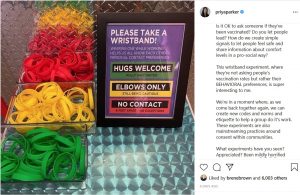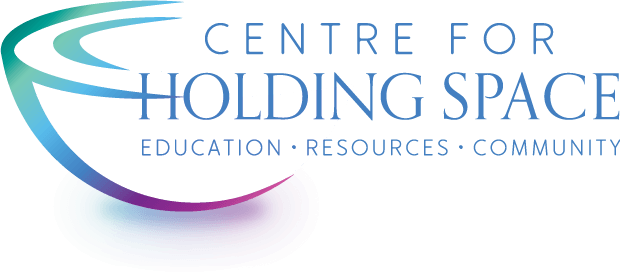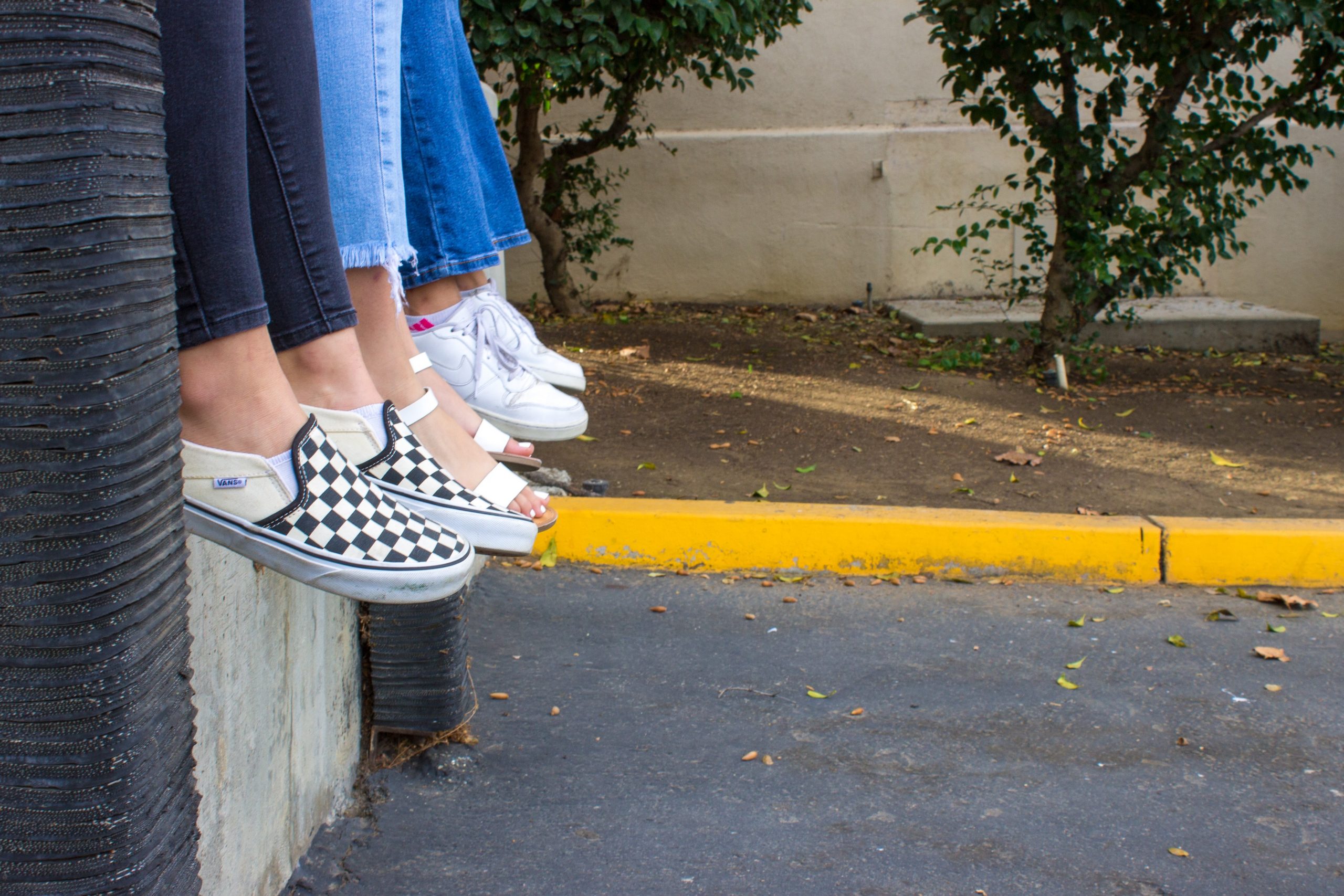Listen to Krista read the post…
There are days I know for sure that we are getting closer and closer to being able to be together in person again, and there are other days I despair that it will ever happen. Here, in my part of the world, we are still in the middle of trying to get control of a third wave of COVID infections. Our ICUs have filled to the point where we have had to send patients to other provinces, so to say that we have been struggling feels like something of an understatement.
That being said, or maybe despite the circumstance you currently find yourself in, it is worth it to begin to consider or imagine what it might look like for you or your family or any groups you are a part of/responsible for to start being back in physical proximity to others. (Much of this was inspired by Brene Brown’s recent Dare to Lead podcast episode with Priya Parker – I’d highly recommend listening to it!)
1. Don’t assume everyone feels the same about being together in person. Just because you are excited to hug people again doesn’t mean everyone else will be too. We’re in a prime spot to really practice and build consent culture right now. When you begin to meet again, make it normal to ask “Is it okay if we..?” “Would you like to..?” “How would you feel about..?” Honour folks’ autonomy and do your best not to take their responses personally if it’s not what you expected or wanted. You may feel a bit sad that they aren’t ready for the same proximity you are, and that’s okay. Additionally, allow space for people to change their minds. What’s true about consent during sexual encounters is true in these days, too – consent has to be on-going and enthusiastic. If it’s neither, assume it to be a no and act accordingly. Priya Parker, author of The Art of Gathering, offered on Instagram a quick visual way you can assess people’s readiness for physical proximity via coloured wristbands.

2. Official guidelines for re-opening are just that: guidelines. They’re a starting point for you to have conversations with your family, friends and communities about how you’d like to proceed going forward. Using the current public guidelines as a framework and starting from the vantage point of keeping the most vulnerable among you safe, begin to have conversations about moving forward from there. For example, at my church, we agreed that even if the public guidelines said we could start meeting in our building again, we wouldn’t until a) all of us could be there, b) the kids were free to run around, c) our membership was over 80% vaccinated or physical distancing measures were reduced and d) we can sing freely together. These are all things that are important to us, and to think of being together and still having to hold back on expressing our care and compassion and love of singing feels more cruel somehow, than continuing to meet safely on Zoom.Take some time to think about what you value – as an individual, as a family, as a community – and then decide on what “reopening” might look like for you.
3. Move at the speed of the most traumatised, disadvantaged or at risk person. This pandemic has exposed how much of what we considered “normal” was really ableist (see articles by Shanna K. Kattari and Julia LaRoe for examples), racist (see articles by Calvin Baker and USA Today for examples), sexist (see reports by McKinsey and Company and UN Women for examples), or classist (see articles by Leah T. Rosen and Richard V. Reeves and Jonathan Rothwell for examples). We can’t afford to ignore these lessons as we move forward. What did we change over this last year that actually made things more accessible to folks? How can we keep that? What are we no longer doing or requiring from folks that we don’t actually miss anymore? Who is the most traumatised, disadvantaged or most at risk among us? What can we do to better serve them going forward?
Aside from accessibility issues, it’s important to become more trauma-informed as we move back towards meeting together in person. The reality is that this pandemic has been a form of trauma for all of us, regardless of whether we felt we had a good or a bad experience, but those mentioned in the articles above were more likely to have entered into this time with a history of trauma, and that trauma was likely exacerbated (again, read the articles linked above for a better understand of why that would be). Trauma tends to live in our bodies, so many folks might require intentional healing and release before they feel safe to gather with others. In addition to being mindful and compassionate about this, do what you can to gather resources for those who may need them, and don’t shame anyone for their own experience of this transition.
Don’t forget that it’s also important to think about who is at greatest risk if people in your community aren’t vaccinated or if there is a risk of new vaccine-resistant strains (i.e. elderly, disabled, immune-compromised, etc.). The folks who were at greatest risk during the pandemic will ALWAYS be more susceptible to viruses and infections (pandemics aside), so this is an opportunity to learn to be more compassionate towards them in all our gatherings going forward.
I recognize that this list of people to pay special attention to probably feels pretty overwhelming if you’re in a leadership position, but that’s partly why it’s important to start having these conversations well in advance of beginning to gather again. Think of it as an opportunity to truly be a culture-creator and engage your community with some enthusiasm to be leaders in your field!
4. Be realistic and manage your own and others’ expectations. We are still solidly in liminal space and will be for some time yet. Things won’t automatically flip back to the way they were 18 months ago. Too much has happened for that to happen. And even if you live in a place that was relatively good at handling the pandemic, chances are you’re not immune from how it’s impacted others across the world. Social media, for better and for worse, causes us to co-regulate differently now than in the past when we gathered primarily in person. This means we may find that we or others have “changed” since we last saw them in close physical proximity. Our ability to trust others (or feel comfortable in groups) may have diminished. The energy it takes to plan or engage in events and gatherings may have diminished. Our social anxiety may have increased (or perhaps we developed new social anxieties). Our phobias around sickness and germs may have increased. Our depression may have deepened (or new depression may have developed). Be gentle with yourself and others and allow time for everyone to warm back up to being together in light of all of these new realities going on inside each of us. Don’t feel like you need to rush or push things back to “the way they were” or “the way I was”.
For example, after we decided our own reopening conditions, I told my church community to expect that it would take two weeks to a month, after those conditions were met, to actually have our first service back in the building. We’d need time to carefully plan and ease volunteers (many of whom have young families) back into the flow. We are also exploring ways to decentralize the importance of our building – allowing for services to happen occasionally in folks’ homes or once per month on Zoom. We have wanted, for several years, to prioritize our volunteers’ rest and this has given us a perfect opportunity to examine ways to do that.
5. Make time for both grief and celebration. These last 18-odd months have left us all with a lot to process. Take some time to talk about creating a few rituals – for yourself and for your community – to allow time to process the grief of all we’ve lost and to celebrate all the ways we’ve grown or even thrived during this time. Maybe you even want to create a neutral or ambivalent ritual, too – some kind of way to honour the weird, often existential ‘meh’ that much of this pandemic has left us with. Build a little cairn in your backyard out of stones. Dig up a cultural ritual from your own ancestry that you’d like to try to practice. Make a collage or other work of art collectively as a community. Have an outdoor, physically distanced dance party if you’re able. Or do it on-line over Zoom! Whatever you do, find a way to mark this time and its complexity in a real, tangible way. (Check out this article on CBC radio reflection on celebrating the end of the pandemic.)
6. Have patience and compassion for everyone’s process. There is no one-and-done anymore. You’re going to need to experiment and get things wrong – probably multiple times – before you land on practices that fit right for you and your communities. Lean in to your holding space skills, or maybe join us this year to build them! (Shameless plug – registration for our Holding Space Foundation Program and Practitioner Certification Course both just opened for our October 2021 session!)

